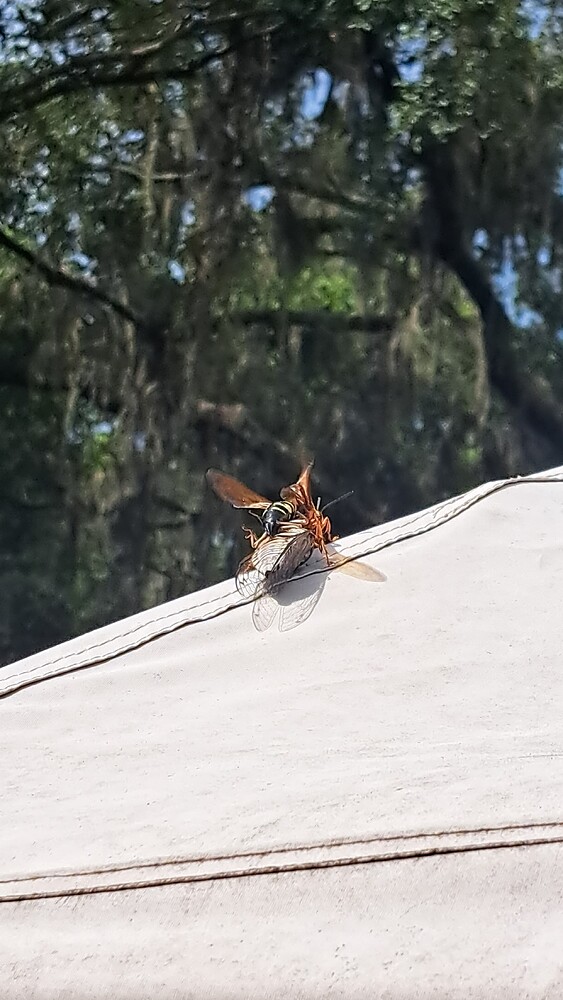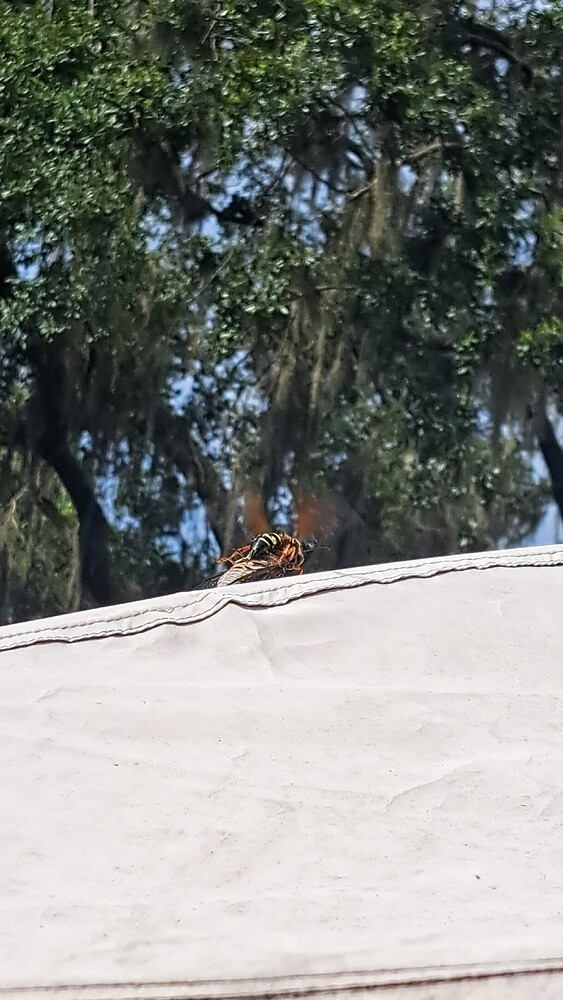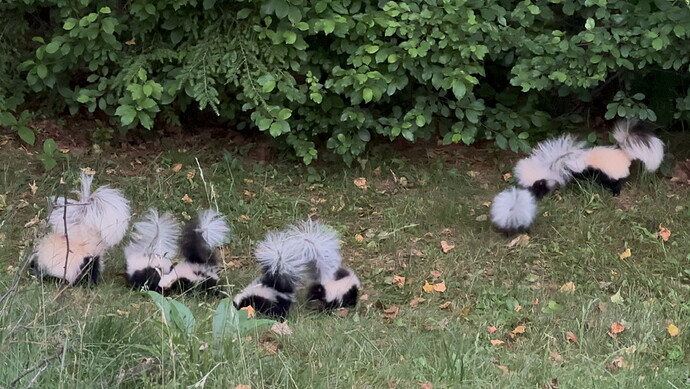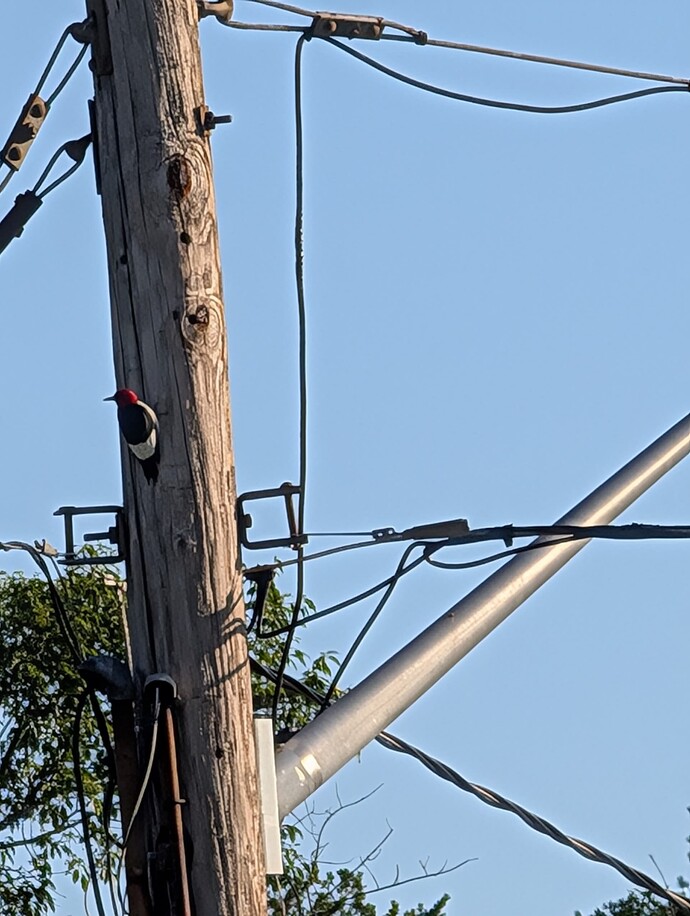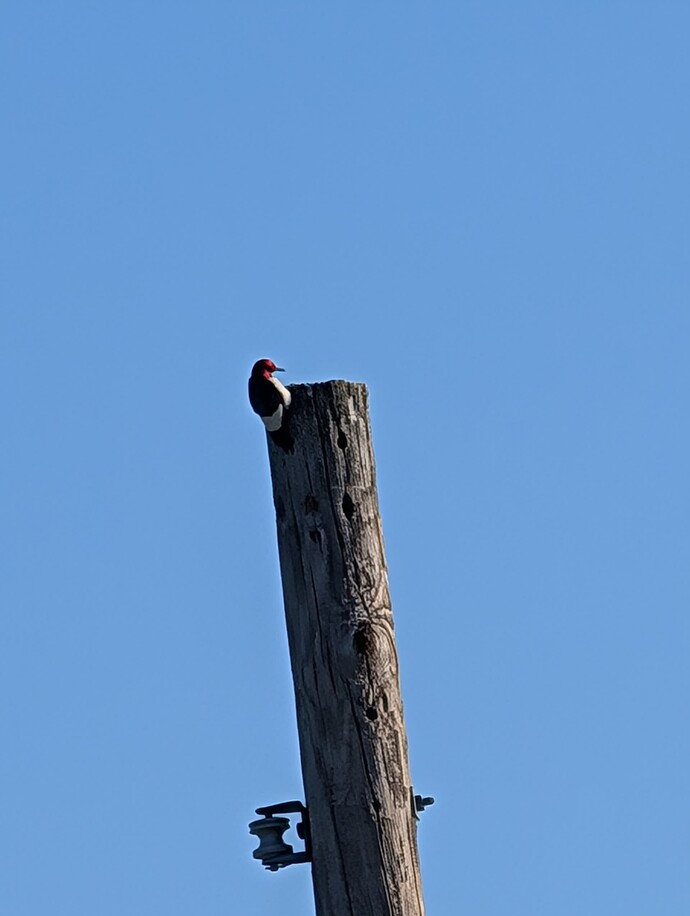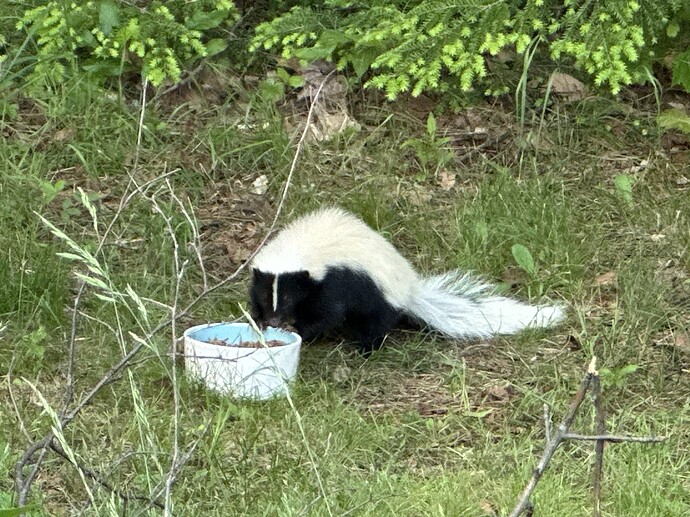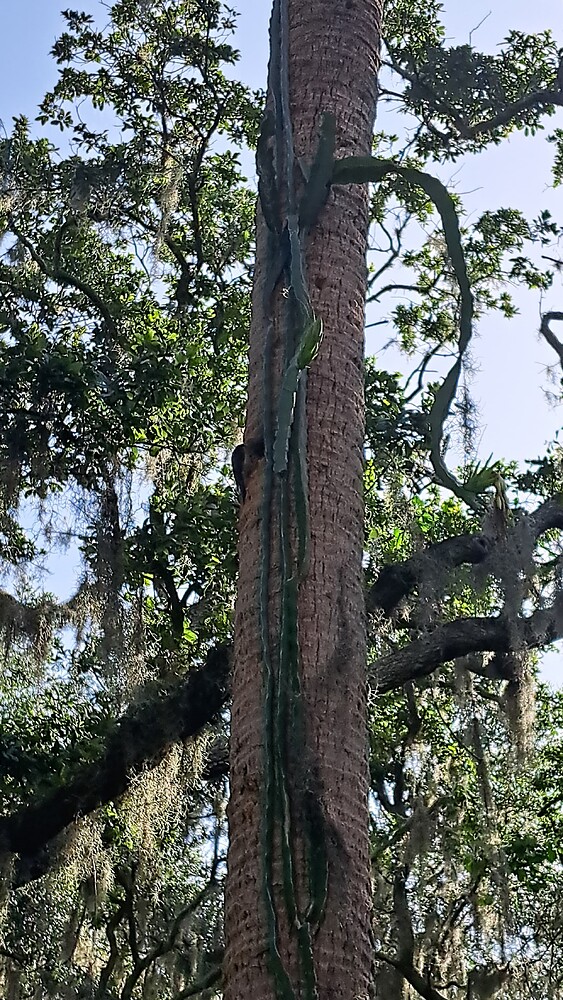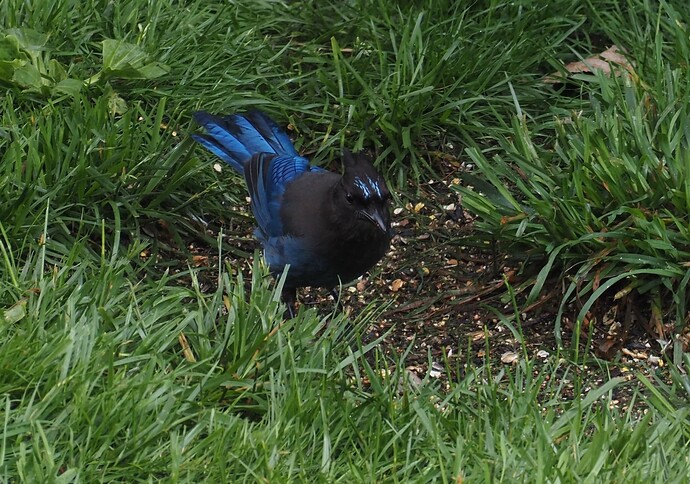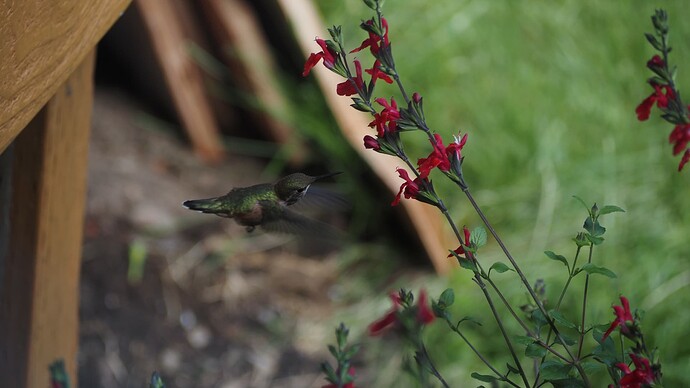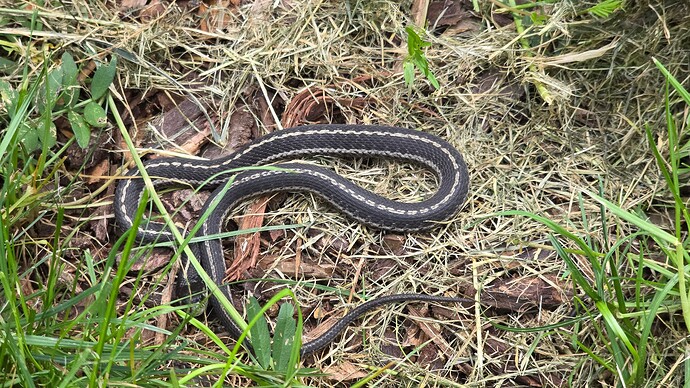Pretty darling…and apparently precocious that it could read and know that it was welcome! What an amazing setting with a brook…so nice.
i have a family of them living under my back shed. they come back every spring. the kits are so cute. once in awhile i run into the family just before dark heading out to eat the grubs out of my lawn. i had them once walk right by me. the mother stopped about 4ft from me. gave me a glance and a sniff then kept walking, 4 kits in tow. 7 is a big litter. you must have a lot of grubs.
My Golden Guide to moths & butterflies (©1977 for $2.95) shows quite a number of fritillaries. The nearest equivalent I find in it is Great Spangled fritillary. These can be found where a number of broad-leaf tree species can survive near rivers & streams here in near-desert eastern Washington.
Those eyes are really different. Nice shot!
Cicada killer wasps are rare in my region. I think only three have ever crossed my path. Cicadas emerge about every four years, with two types: one that makes a clicking sound and the other with the extended high buzz.
Freaky looking wasps, but not concerned if I happen to be doing yard work near at hand.
The other, more common - at least four species that I’ve seen - wasps around here are ichneumon wasps. One species has surprisingly long flexible ovipositors that look like hypodermic needles. Totally uninterested in people, nor much concerned except to stay out of harm’s way.
Thanks for those photos; never seen that action yet!
They’re uncommon here at my house too.
Plenty of red-bellied, downy, hairy, and the occasional pileated.
Not many grubs or japanese beetles last year. But not gonna lie. They get a little treat in the evening for their nightly work and it keeps them away from the chickens during free range time.
What a handsome bird. No red-head - or bellied in this region.
If I get to the right situations I might encounter Lewis’s (really dark with wine-red face) or white-headed (like myself but much younger).
Sometimes, if I’m alert, black-backed & even 3-toed will work over dead trees after a burn.
Red-shafted flickers occur everywhere, in town & out. Out of town: downy, hairy, pileated in heavy trees & their distant cousins red-breasted, white breasted and pygmy nuthatches by the score.
Is that a hooded? That would be a lifer for me!
Parent woodpecker feeding its babies in the dead palm tree. This tree is also the trellis for my 30ft tall dragonfruit, and the fruit up that high are a favorite of the woodpeckers.
I don’t think so. I’m way out of their range in New Hampshire. But most of the striped skunks in my area are biased toward mostly white…although there have been a couple of mostly black ones with unusual white markings. With all of the ones I’ve seen here over the years I don’t think I’ve seen one prototypical black one with white stripe.
@NuttingBumpus Thank you for the information on type of butterfly. I did not know the name, but they are very common around here. I guess due to lots of hardwood trees and water.
The shot was not hard to get. The butterfly would not leave me alone, no matter where I went in the garden.
You are very observant. I did not really notice the eyes before you pointed them out. I enlarged the photo and took a close look. They are quite interesting!
Sandra
ive only seen a few pure white back ones in my life here in n. Maine. very rare. you have a unique population of them there.
Love these guys
I’ve been able to stop using mice traps since I started seeing them. Also accidentally killed and injured one bird with the traps so I guess I’ll only start putting them out during the cold season and protected to where the birds or snakes can’t get to them. I found the injured bird and felt so bad seeing the trap next to them.
There’s a really big gardener snake living somewhere that sets off my motion lights every night. Didn’t believe it until i saw the thing in the daylight. Only see the grass moving in a snakey motion in most shots. They’re great gardeners ![]() no more 20 mice at night
no more 20 mice at night
A handsome specimen. I had to look it up, since it resembles nothing in my neck of the woods: rat snake?
Milk snake?
